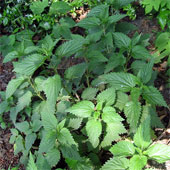November 29th, 2011 by GarySchwitzer in News, Opinion
No Comments »

The NHS Choices Behind the Headlines project in the UK analyzes claims that there is an epidemic of home allergies. Excerpt:
At least 12 million Britons now suffer from allergies caused by dust mites, The Independent has today reported. The newspaper says that a report by the charity Allergy UK has revealed an epidemic of “home fever”, a range of symptoms caused by dust mites and other triggers around the home.
The report has been published as part of Indoor Allergy Week, which is intended to raise awareness of the kind of steps that can be taken to remove allergy triggers, or ‘allergens’, from the home. A survey in the report suggests that, currently, around two-thirds of people with allergies experience symptoms such as sneezing and itchy eyes caused by allergens including dust mites, chemicals, pets and mould.
This new report raises lots of questions, such as Read more »
*This blog post was originally published at Gary Schwitzer's HealthNewsReview Blog*
November 14th, 2011 by Paul Auerbach, M.D. in Research
No Comments »


Stinging nettle plants, courtesy of Dezidor (CC BY 3.0)
Hikers often brush up against injurious plants, such as poison oak or thorny shrubs. One particularly vexing plant is the “ubiquitous weed, Urtica dioica,” commonly known as stinging nettles. As described in an article entitled “Mechanism of Action of Stinging Nettles” (Wilderness & Environmental Medicine:22,136-139,2011) by Alexander Cummings and Michael Olsen, direct contact exposure to the weed causes immediate stinging and burning sensation on the skin. The authors exposed mouse skin to the plants and looked at this skin using an electron microscope. They found smooth nettle spicules that had pierced the skin surface, a few of which retained their bases, which appeared empty of liquid contents. The authors concluded that the mechanism of action of stinging nettles skin reaction was both biochemical and mechanical, likely caused by impalement of spicules into the skin.
The spicules are present as small “hairs” that are found on the stem and undersides of the leaves of the plant. Even light touch against the plant can cause a reaction, which is often characterized as Read more »
This post, The Burning, Itching, And Swelling Of Stinging Nettles: Removing Them From The Skin, was originally published on
Healthine.com by Paul Auerbach, M.D..
October 2nd, 2011 by HarvardHealth in Research
2 Comments »

Kicking the cigarette habit is one of the best things that smokers can do for themselves. Nicotine replacement products, prescription medications, and counseling can all help. What about the newest tobacco substitute, the electronic cigarette? Despite the appeal of so-called e-cigarettes, we don’t know enough about their safety or effectiveness to give them the green light.
Electronic cigarettes come in a variety of shapes. Some look like cigarettes, pipes, or cigars, while others are disguised as pens or other more socially acceptable items. Whatever their shape, they all are built around a battery-operated heating element, a replaceable cartridge that contains nicotine and other chemicals, and an atomizer that converts the chemicals into an inhalable vapor.
A study published this spring in the American Journal of Preventive Medicine concluded that electronic cigarettes may help smokers quit. Whether they are a safe way to quit is another question—preliminary studies from the FDA, New Zealand, and Greece raise some concerns.
There are three reasons to worry about electronic cigarettes. First, Read more »
*This blog post was originally published at Harvard Health Blog*














